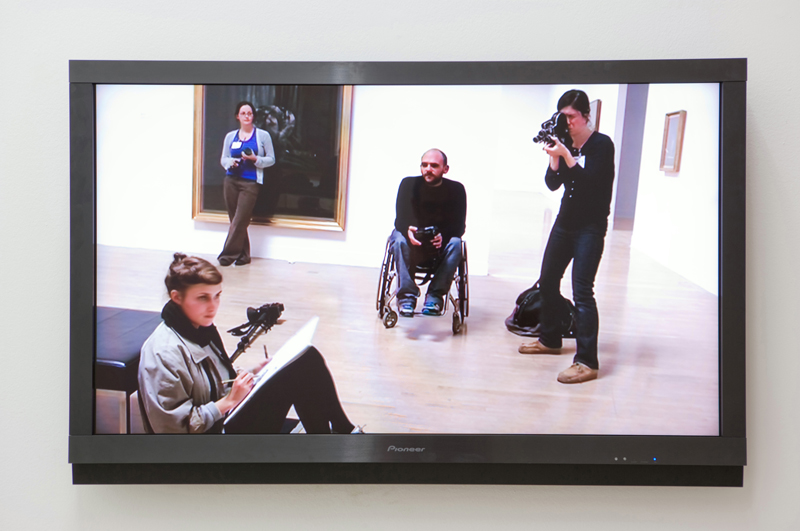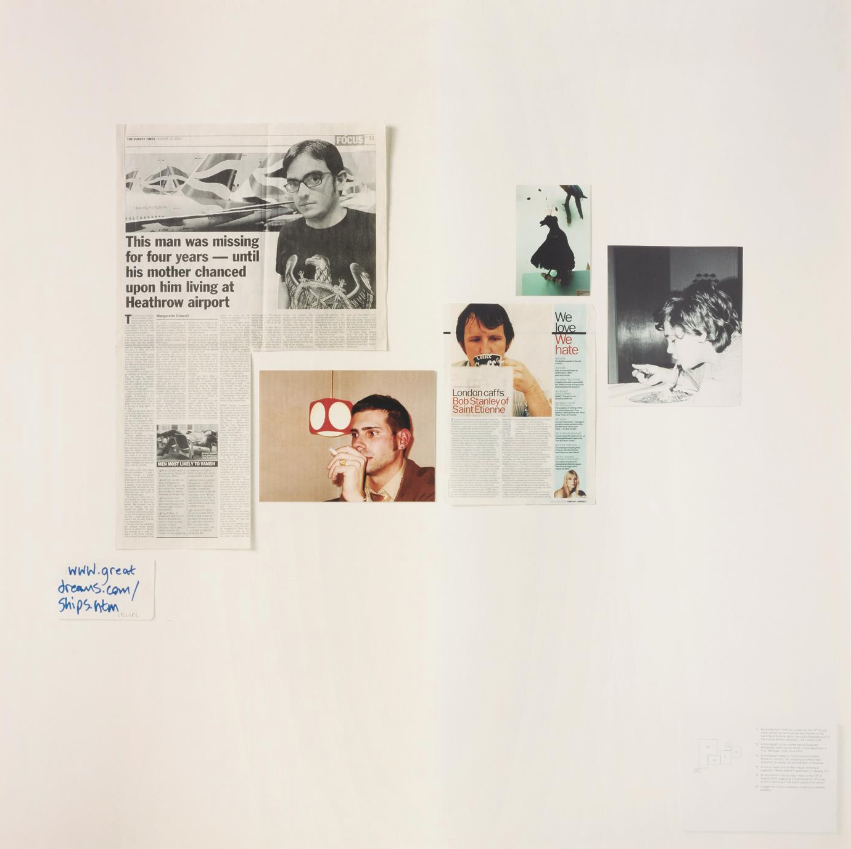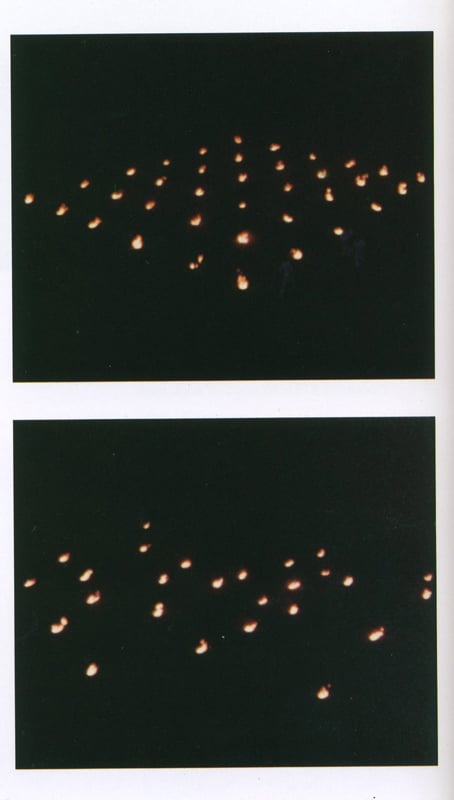Our love is like the Flowers, the Rain, the Sea and the Hours
2003 - Installation (Installation)
Martin Boyce
In the installation Our Love is like the Flowers, the Rain, the Sea and the Hours, Martin Boyce uses common elements from public gardens – trees, benches, trashbins– in a game which describes at once a social space and an abstract dream space. The trees, unique sources of light in the exhibition space, produce their own environment. These sculptures, as if extracted from a set, are enough to suggest an atmosphere, a landscape, or a movie. Their nocturnal depiction is ambivalent, hovering between poetic beauty and the potential threat of a park at night. Romantic views of nature blend with modern ideas of optimism and equality. However, from it emerges from a deep anxiety or paranoia. The perceived space cannot be localized inside a certain reality, rather it pertains to the everyone’s imagination. Therefore, in the installation, the viewer produces what he sees around him with his own eyes and own journey through the space. Its space becomes the psychological and emotional space of an idler. When describing the piece, Boyce has stated that the sculptures move far from the visible and the material generating more of an emotional state rather than theoretical reflection. “My installations draw upon imaginary and fragmented landscapes. When I introduce an object within an installation, it recalls the world from where it is derived from, like a fragment, it is a exploded variation.” The universe of Martin Boyce is multifarious, extracting fragments of reference as varied as architecture, design, cinema, Scottish literature, Japanese poetry, etc. His forms do not fit perfectly within one category and exist more as ghosts of meaning. For instance, a sculpture can distinctly resemble a tilted ping-pong table although all the elements deviate from such a table to a great extent. Concrete trees by Joel and Jan Martel made in 1925 for the Decorative Arts Exhibition in Paris are a recurrent theme throughout the work of Boyce, as well as replicas in “Electric trees and telephone booth” (2006) and formal traces in works such as “We are still and reflective” (2007). The artist sees these objects as a perfect “collapse” between architecture and nature. The sculptures, consisting of trees, gates, vents, signs, dot the exhibition space, becoming a stage. While the forms and materials from were conceived to be functional, Martin Boyce uses them less as objects of representation and more as objects of emotion. Their titles, extracted from fragments of poems, pop songs, slogans, exist as a way to “inhabit” the installations and poeticize the real.
“My installations draw upon imaginary and fragmented landscapes. When I introduce an object within an installation, it recalls the world from where it is derived from, like a fragment, it is a exploded variation.” The universe of Martin Boyce is multifarious, extracting fragments of reference as varied as architecture, design, cinema, Scottish literature, Japanese poetry, etc. His forms do not fit perfectly within one category and exist more as ghosts of meaning. For instance, a sculpture can distinctly resemble a tilted ping-pong table although all the elements deviate from such a table to a great extent. Concrete trees by Joel and Jan Martel made in 1925 for the Decorative Arts Exhibition in Paris are a recurrent theme throughout the work of Boyce, as well as replicas in Electric trees and telephone booth (2006) and formal traces in works such as We are still and reflective (2007). The artist sees these objects as a perfect “collapse” between architecture and nature. The sculptures, consisting of trees, gates, vents, signs, dot the exhibition space, becoming a stage. While the forms and materials from were conceived to be functional, Martin Boyce uses them less as objects of representation and more as objects of emotion. Their titles, extracted from fragments of poems, pop songs, slogans, exist as a way to “inhabit” the installations and poeticize the real. Martin Boyce was born in Glasgow, Scotland in 1967 where he lives and works today.
Colors:
Other related works, blended automatically

© » KADIST
Keith Tyson
The work of Keith Tyson is concerned with an interest in generative systems, and embraces the complexity and interconnectedness of existence...

© » KADIST
Ryan Gander
2012Epiphany…learnt through hardship is composed of a bronze sculpture depicting the model of the little dancer of Degas, in the pose of a female nude photographed by Edward Weston (Nude, 1936) accompanied by a blue cube...
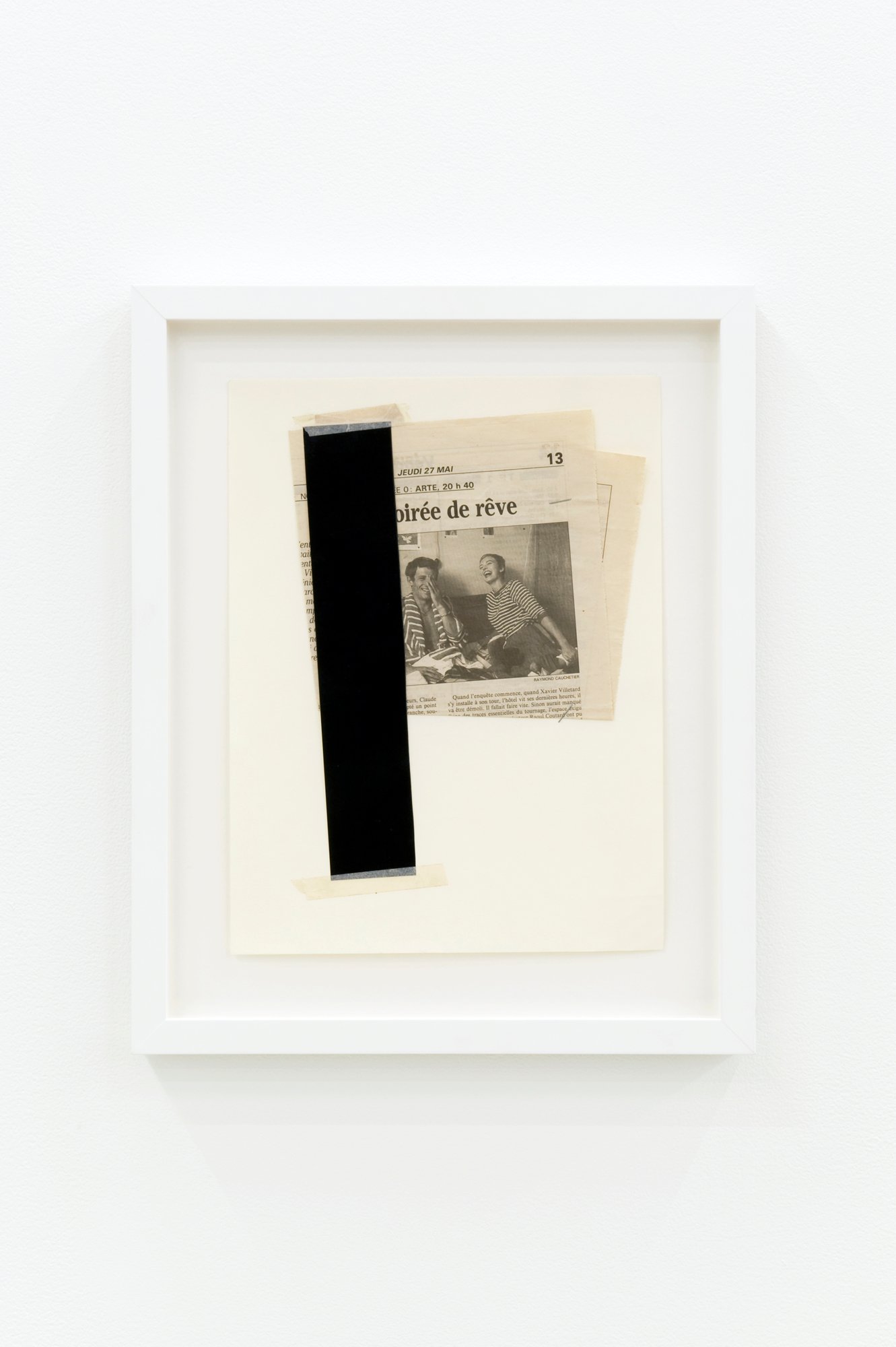
© » KADIST
Ian Wallace
2000Untitled (Breathless) presents a folded newspaper article on Jean-Luc Godard’s À Bout de Souffle (Breathless)...

© » KADIST
Anthony McCall
1974This score is a graphic record of the detailed choreography of one of Anthony McCall’s Landscape for Fire performances...

© » KADIST
Charles Avery
2012Since 2005, Charles Avery has devoted his practice to the perpetual description of a fictional island...

© » KADIST
Tacita Dean
2001The photographic quality of the film Baobab is not only the result of a highly sophisticated use of black and white and light, but also of the way in which each tree is characterized as an individual, creating in the end a series of portraits...

© » KADIST
Rosalind Nashashibi
2019Rosalind Nashashibi’s paintings incorporate motifs drawn from her day-to-day environment, often reworked with multiple variations...
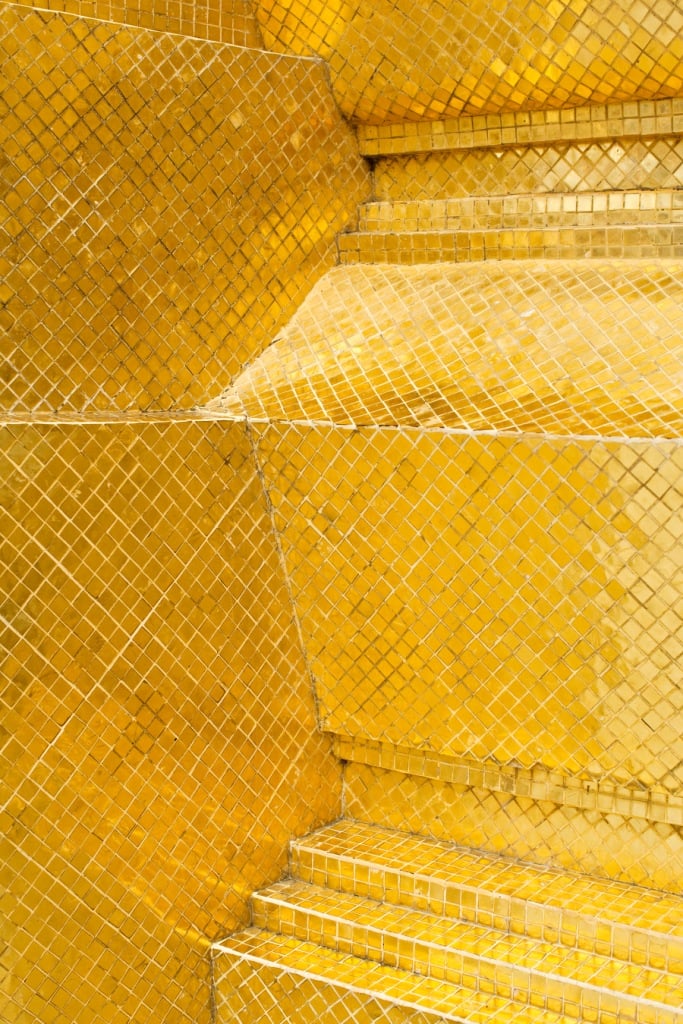
© » KADIST
Chris Wiley
2012Architectural details become abstracted renderings in Chris Wiley’s inkjet prints 11 and 20 (both 2012)...

© » KADIST
Chris Wiley
2012Architectural details become abstracted renderings in Chris Wiley’s inkjet prints 11 and 20 (both 2012)...
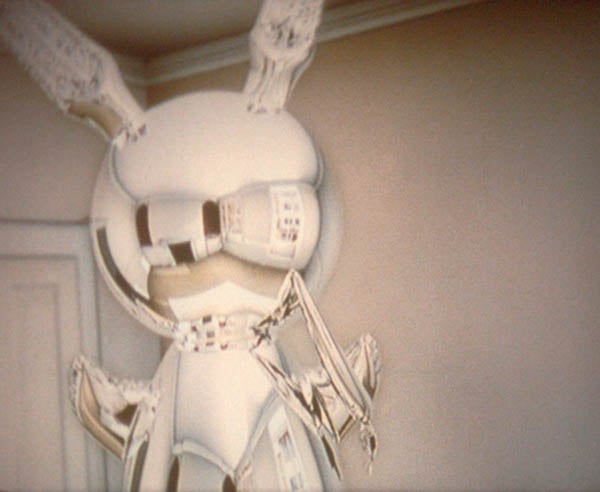
© » KADIST
Mark Leckey
2004In Made In Heaven , we are face to face with a sculptural apparition, a divine visitation in the artist’s studio...

© » KADIST
Ian Breakwell
2008“BC/AD” (Before Cancer, After Diagnoses) is a video of photographs of the artist’s face dating from early childhood to the month before he died, accompanied by the last diary entries he wrote from April 2004 to July 2005 (entitled “50 Reasons for Getting Out of Bed”), from the period from when he lost his voice, thinking he had laryngitis, through the moment he was diagnosed with lung cancer and the subsequent treatment that was ultimately, ineffective...




